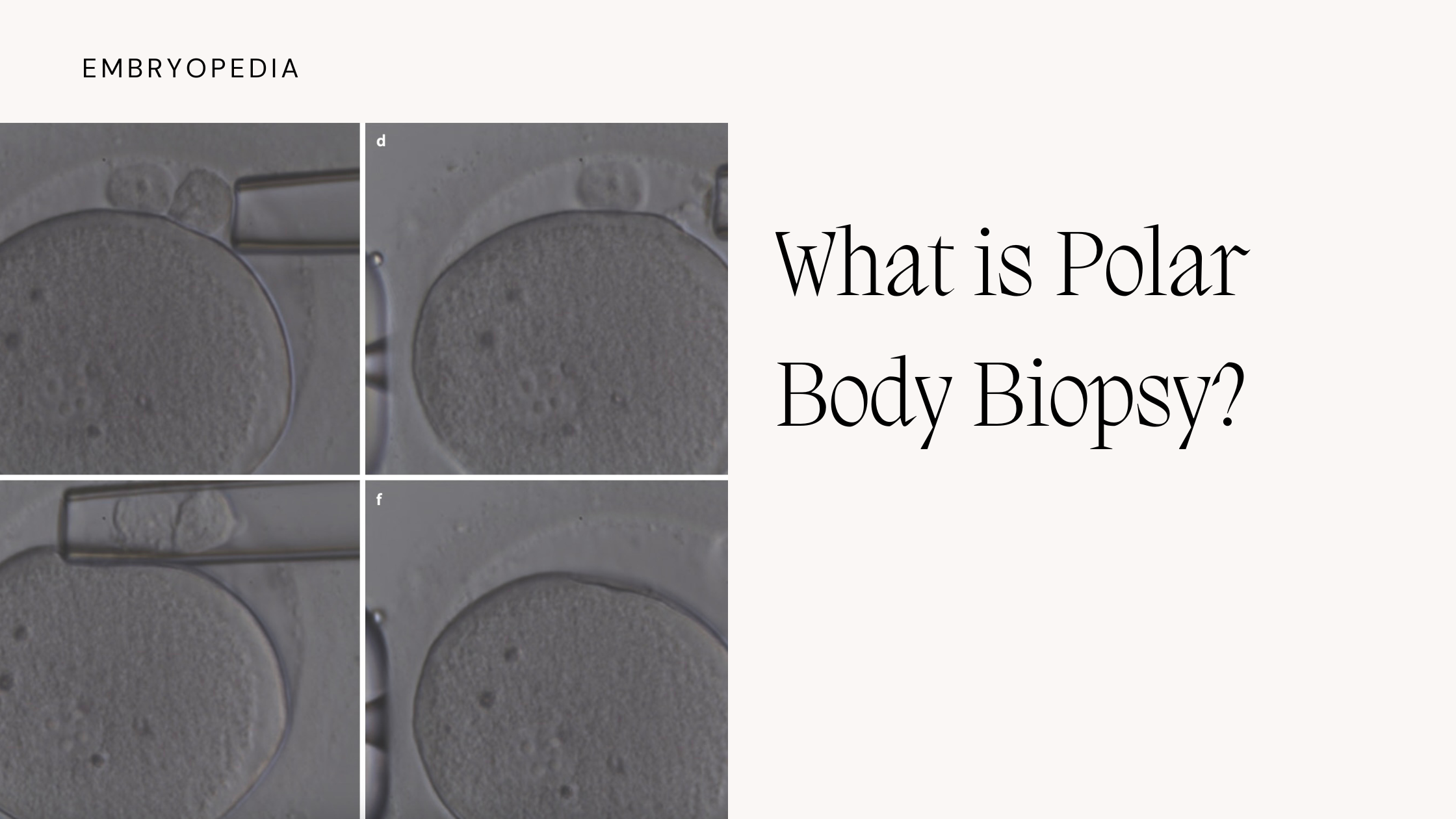“There’s no way to measure egg quality unless we see how the embryo develops”
Well, not anymore.
One such method that’s not as popular, but nevertheless exists is polar body biopsy.
It helps us understand the genetic health of the eggs before egg freezing or IVF
It’s especially helpful if there’s a known maternal genetic disorder or even a mitochondrial disorder that can possibly be carried over to the next generation.
So let’s dive in and get to know how polar body biopsy actually works.
Table of contents:
- What is polar body biopsy?
- How is polar body biopsy done?
- When is a polar body biopsy done?
- How is the sample processed?
- Who can benefit from this procedure?
- What are the limitations?
What is Polar Body Biopsy?
During the natural maturation process of a human egg cell (oocyte), something fascinating happens. The egg cell undergoes a special type of division called meiosis, where it needs to reduce its genetic material by half to prepare for fertilization.
During this process, it creates small cellular structures called polar bodies – think of them as nature’s way of packaging extra genetic material.
The egg cell divides its genetic material unevenly, creating two distinct entities: a large egg cell that contains all the cellular machinery needed for future development, and a much smaller polar body that contains a copy of the genetic material but isn’t needed for fertilization or embryo development.
This process happens twice, resulting in two polar bodies. By analyzing these polar bodies, scientists can indirectly assess the genetic health of the egg itself without disturbing the egg’s potential for fertilization.
How is polar body biopsy done?
Polar body biopsy is not a common procedure and hence requires the equipment that’s usually used for biopsy and expertise in this process, specifically. Here’s the checklist on what we need:
- An inverted microscope with a heated stage to maintain optimal temperature
- Precise micromanipulators for handling microscopic cells
- A specialized laser system for creating precise openings
- High-quality imaging systems for visualization
- Special holding and biopsy pipettes
The procedure involves three main steps:
1. Zona Opening
Using a precise laser beam, the embryologist creates a tiny opening (about 20 micrometers) in the egg’s protective shell, called the zona pellucida.
This step requires extreme precision – too large an opening could compromise the egg’s integrity, while too small an opening might make it difficult to remove the polar bodies.
2. Polar Body Extraction
Through this opening, the embryologist carefully maneuvers a fine glass needle to extract the polar bodies.
This step requires steady hands and expertise, as the polar bodies are extremely delicate and must be removed without damaging the egg itself.
3. Sample Preservation
Once removed, the polar bodies are carefully preserved for genetic testing. The method of preservation depends on the type of genetic analysis planned.
When is a polar body biopsy done?
Timing is absolutely crucial for successful polar body biopsy. This is because even for the first or second polar body, it’s important to not biopsy it just after its formation.
The procedure follows a precise schedule:
- The first polar body appears when the egg reaches maturity (metaphase II stage)
- For the first polar body biopsy, it can be done that this stage before ICSI
- The second polar body forms shortly after fertilization or ICSI
- The optimal window for second polar body biopsy is between 8-14 hours after ICSI
Why this specific timing? Too early, and there’s a risk of damaging genetic connections still present between the polar body and the egg.
Too late, and the polar bodies might start to deteriorate, making analysis difficult or impossible. It’s like catching a perfect wave – timing is everything!
How is the sample processed?
After collection, polar bodies can be analyzed using several methods:
1. Fluorescence In-Situ Hybridization (FISH):
- This allows visualization of specific chromosomes
- Provides rapid results
- Limited to analyzing a few chromosomes at a time
2. Array Comparative Genomic Hybridization (aCGH):
- Provides comprehensive chromosomal analysis
- More accurate than FISH
- Takes longer to get results
3. Next-Generation Sequencing (NGS):
- Offers the most detailed genetic analysis
- Can detect subtle genetic changes
- Most expensive option
Who can benefit from this procedure?
Polar body biopsy can be particularly valuable for several groups:
- Women Over 35: As maternal age increases, so does the risk of chromosomal abnormalities. Polar body biopsy can help identify eggs with the correct number of chromosomes.
- Carriers of Genetic Conditions: For women who carry genetic disorders, this technique can help identify which eggs might carry the condition.
- Recurrent Pregnancy Loss: For couples experiencing multiple miscarriages, genetic screening through polar body biopsy might help identify eggs with better potential for successful pregnancy.
- IVF Patients: During IVF treatment, this technique can help select eggs with the highest potential for successful pregnancy.
What are the limitations of a polar body biopsy?
While polar body biopsy is a valuable tool, it’s important to understand its limitations:
- Limited to Maternal genetic material
It can only provide information about the mother’s genetic contribution, as polar bodies contain only maternal DNA.
2. Timing Constraints
The procedure must be performed within a specific time window for optimal results.
3. Cost Considerations
Both polar bodies need to be analyzed for complete information, making it more expensive than some other genetic testing methods.
Wrapping up
While polar body biopsy is an option during egg freezing or IVF, its widespread usage is yet to be seen or normalized.
The procedure offers a window into the genetic health of eggs before fertilization.
As genetic testing technologies continue to advance, the role of polar body biopsy in fertility treatment may evolve further.
Maybe in the next decade, this can be an accessible option for many families facing
fertility challenges- and improving success rates in the long run.
